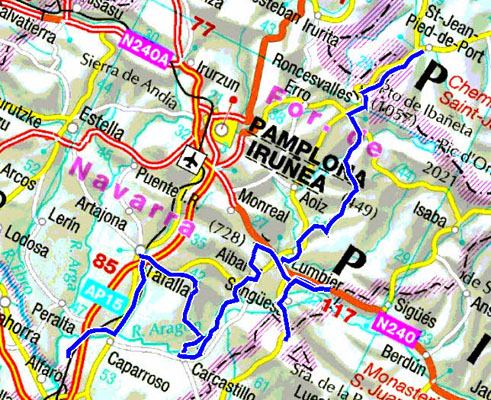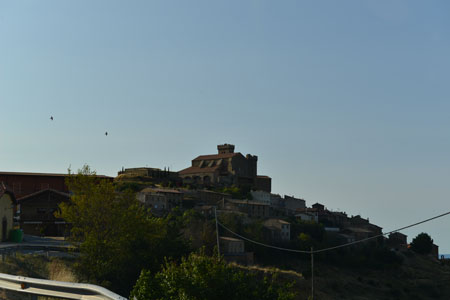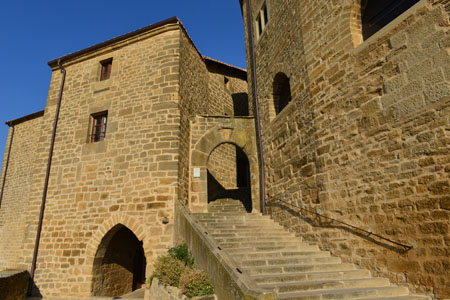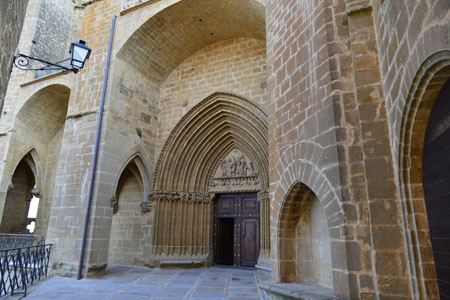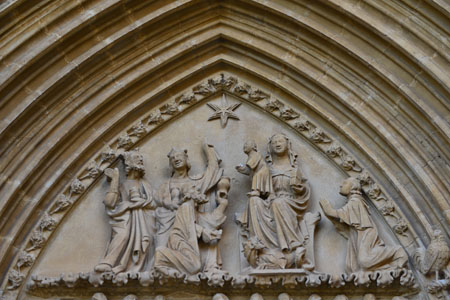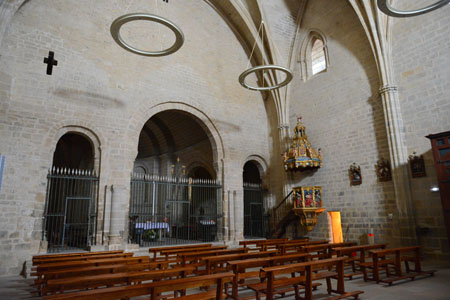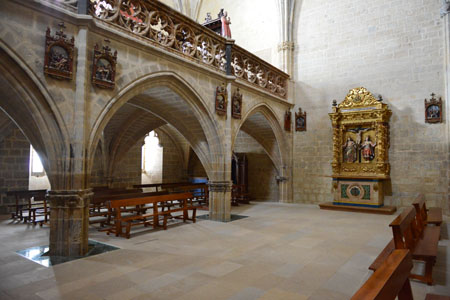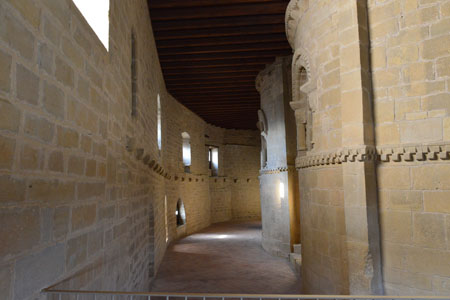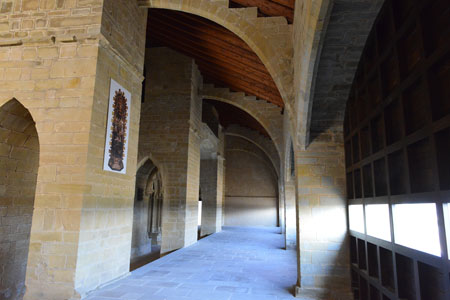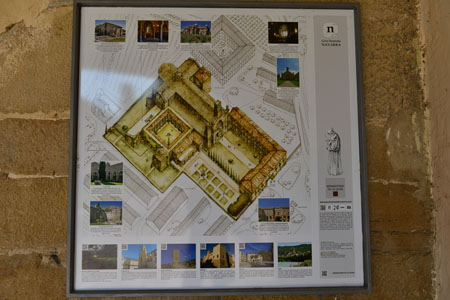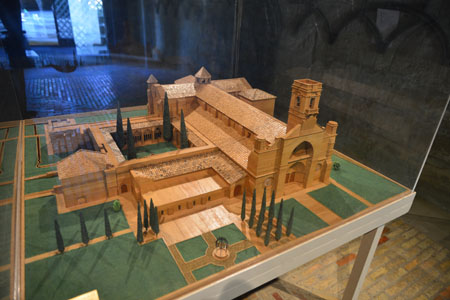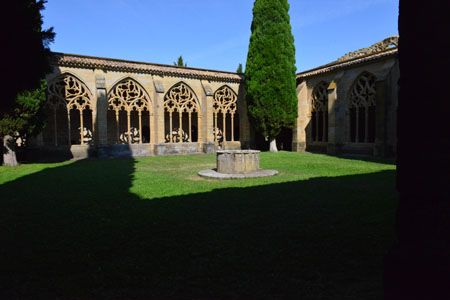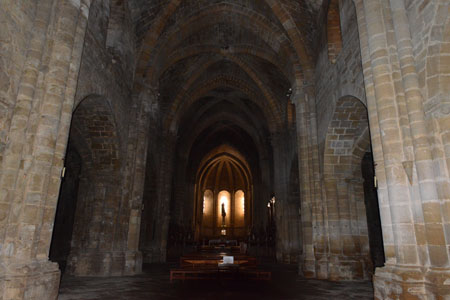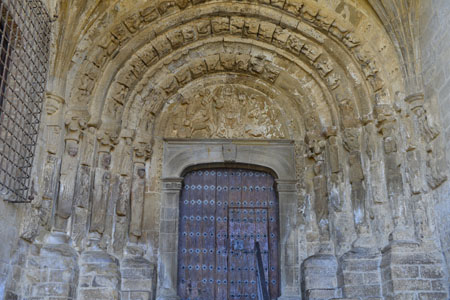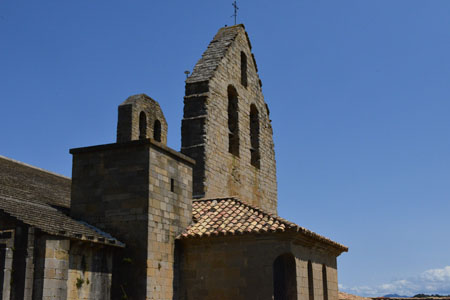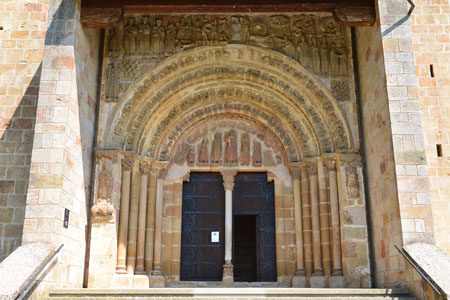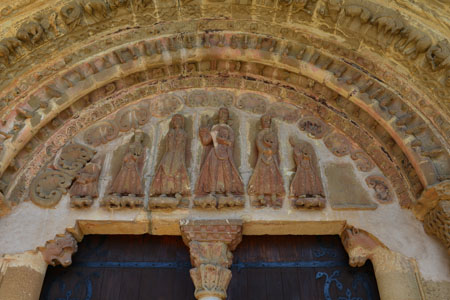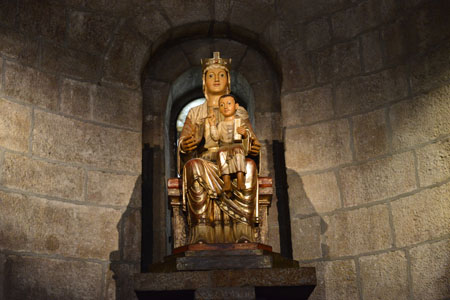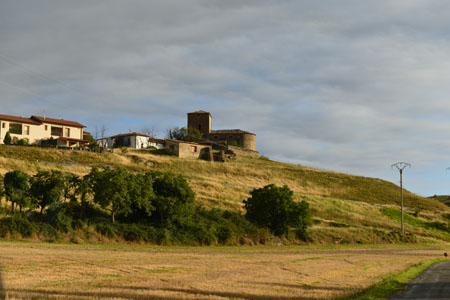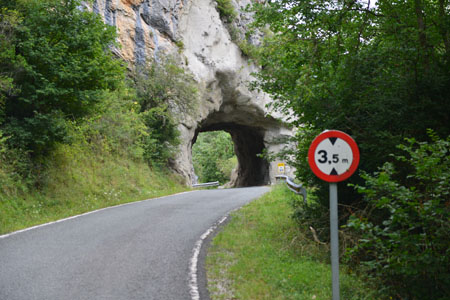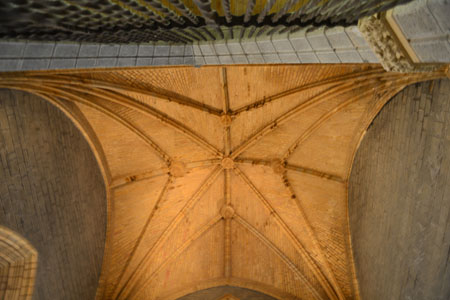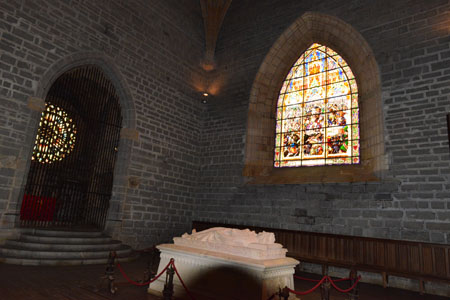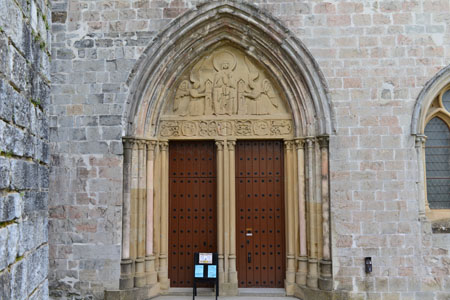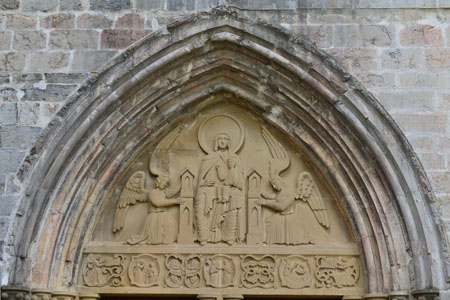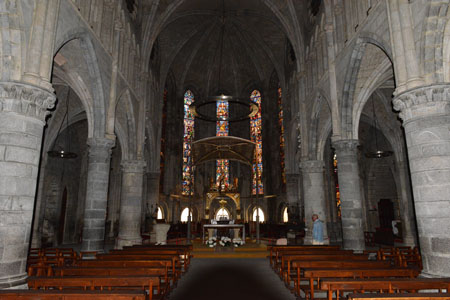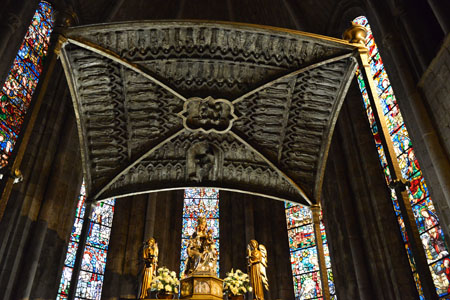The day of August 11th is distributed
between two visits in the morning, the
track in the beginning of afternoon
then two visits.
Ujué
Ujué is an example of a strengthened
medieval village. Its church, Santa
Maria, is her specificity; it is
included in a fort whose gangways are
as much of protection against an
invader. Its style is a mixture of
Romanesque and Gothic. It is seldom to
enterin a church by a weephole.
Monasterio de la Oliva
Close to Carcastillo Monasterio de
Oliva is of the most austere
Cistercian type. The later cloister is
of Gothic type as well as the chapter
house. The kitchens are still black
smoke of the furnaces.
From waypoint VIB900 to waypoint VIB947
The track of the day is broad and
without aggressive trees. It crosses
villages with narrow lanes. The
roadbook makes pass by Leache where a
villager disputed me copiously because
there is a turning! In the landscape,
the wind mills are in the modern times
what the pillars of aqueducts are at
the Roman time.
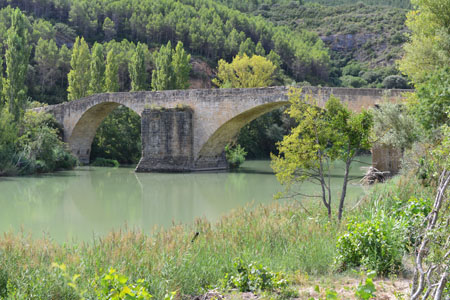 |
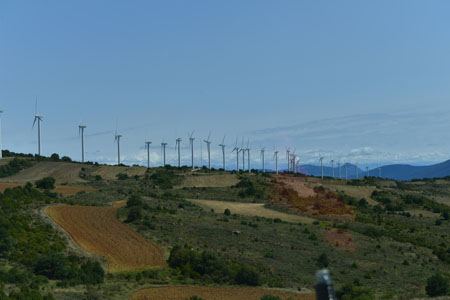 |
| Bridge, VIB923 |
Windmill, VIB943 |
Sos del Rey Catolico
Sos del Rey Catolico is a pretty
village on a hill where Fernando II
was born in 1452. With his wife Isabel
I of Castile they conquered the last
Islamic kingdom of Grenade reunifying
Spain. In this Monday few visitors
surveyed the inclined lanes. On the
other hand the Parador Hotel was well
stocked. The closed church is
characterized by a bell-tower out of
comb as in the south of France.
Monasterio de San Salvador de Leyre
The monastery of Leyre is remarkable
for several reasons. The church was
built in two times. At the 11th
century the chevet is purer Roman
style with a strangeness, the two side
aisles do not have the same width. The
central nave of the 12th century is of
Gothic style with a richly decorated
porch. Under the bedside the crypt is
of an unusual sizen with enormous
pillars and capitals. Finally behind,
a tunnel gave access to the old
monastery. I bivouacked on the car
park.
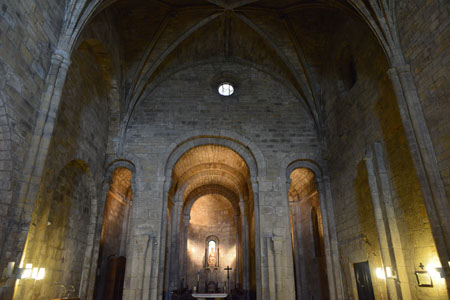 |
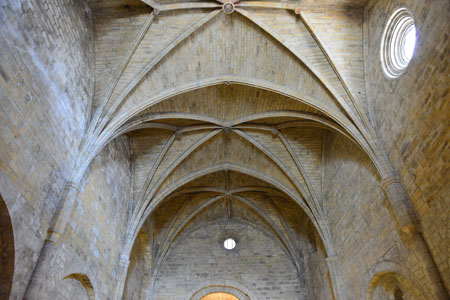 |
| Chevet Romananesque |
Nef Gothic |
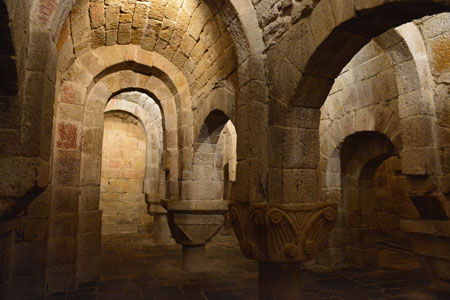 |
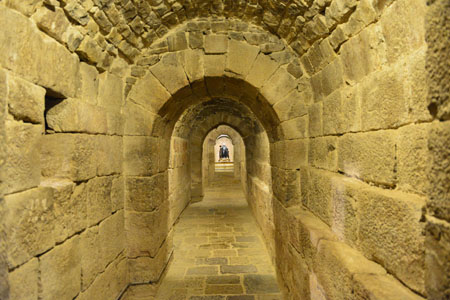 |
| Crypt |
Tunnel |
From waypoint VIB947 to waypoint VIB965
During the night on the car park of the
monastery of Leyre, my thoughts
directed me towards a revision of my
road plan to go to visit Roncevaux
before back to France. I
definitively gave up the roadbook of
Transpyrénéenne at the VIB965
instead of going up to the VIB983.
Thus I forked on the NA140 then N135
which led me to Roncevaux then at the
border of the two countries which are
not materialized any more and finally
to Saint Jean Pied of Port.
Roncesvalles - Roncevaux
Roncesvalles, Roncevaux for French, is
expensive to Europeans set on history.
Indeed in 778 the armies of the
emperor Charlemagne were defeated by
the Basque and Roland, their
commander, was killed. Later in the
11th century, the troubadours
popularized this event by very famous
Chanson of Roland. Roncesvalles became
a big step on Camino de Santiago de Compostela.
The road from Saint Jean
Pied de Port go through the only way of
passage in the Pyrenees by a narrow
strait. The monastery of
Roncesvalles has the characteristic to
belong to the Spanish church not
having been nationalized like all the
other goods of the church. The whole
of the buildings attest of a
remarkable simplicity although of Gothic
style with however additions
in the 20th century like the silver
canopy covering the statue of the
Virgin in the chevet. After lunching
I traversed the strait towards
Saint Jean de Pied de Port where I made
supply in food and diesel.
Finally I stopped on D 18 at the
Vault of St Saver to bivouac.
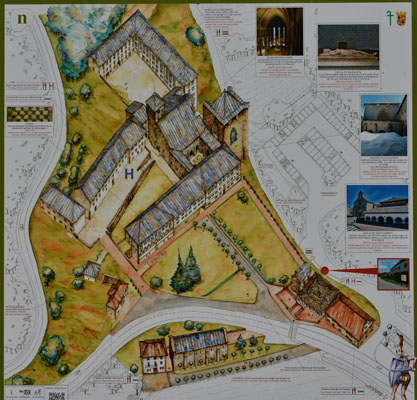 |
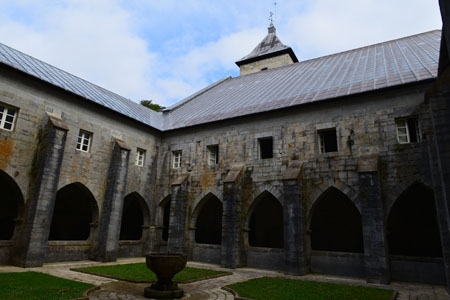 |
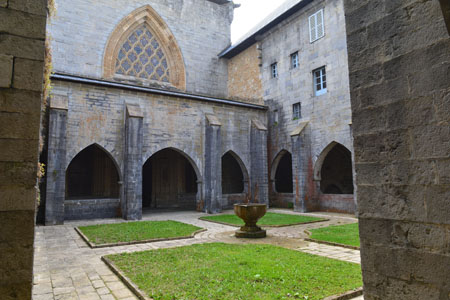 |
| Closter |
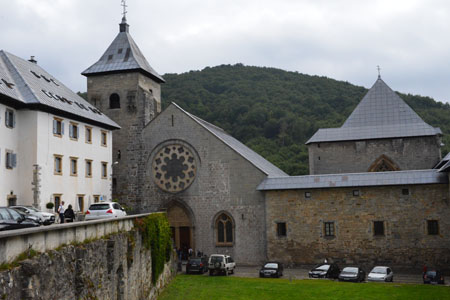 |
| Church Santa Maria |
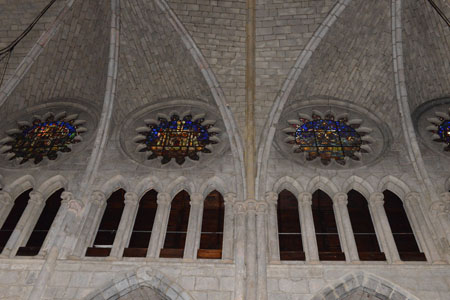 |
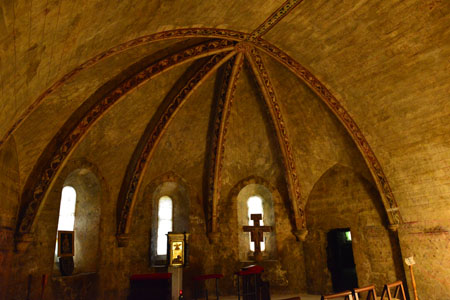 |
| Side stained glasses in
rosette |
Crypt |
